Imagine stepping into your backyard and being greeted by a stunning garden pavilion that feels like a personal oasis. Whether you’re a newcomer eager to elevate your outdoor space or a seasoned homeowner seeking fresh inspiration, “Creative Garden Pavilion Ideas You’ll Love” is your go-to guide. This collection is packed with innovative ideas that promise to transform your garden into a beautiful retreat, offering you endless moments of joy and relaxation right at home.
Filled with practical insights, this guide empowers you to create a pavilion that perfectly suits your style and needs. From enhancing your garden’s aesthetic appeal to providing a functional space for gatherings or solitude, the possibilities are endless. With our expert tips and your creative touch, you’ll soon be enjoying the rewards of a delightful outdoor living space that reflects your personality and enhances your lifestyle. Let’s embark on this exciting journey together—your dream garden pavilion awaits!
Incorporate Nature-Inspired Structural Elements
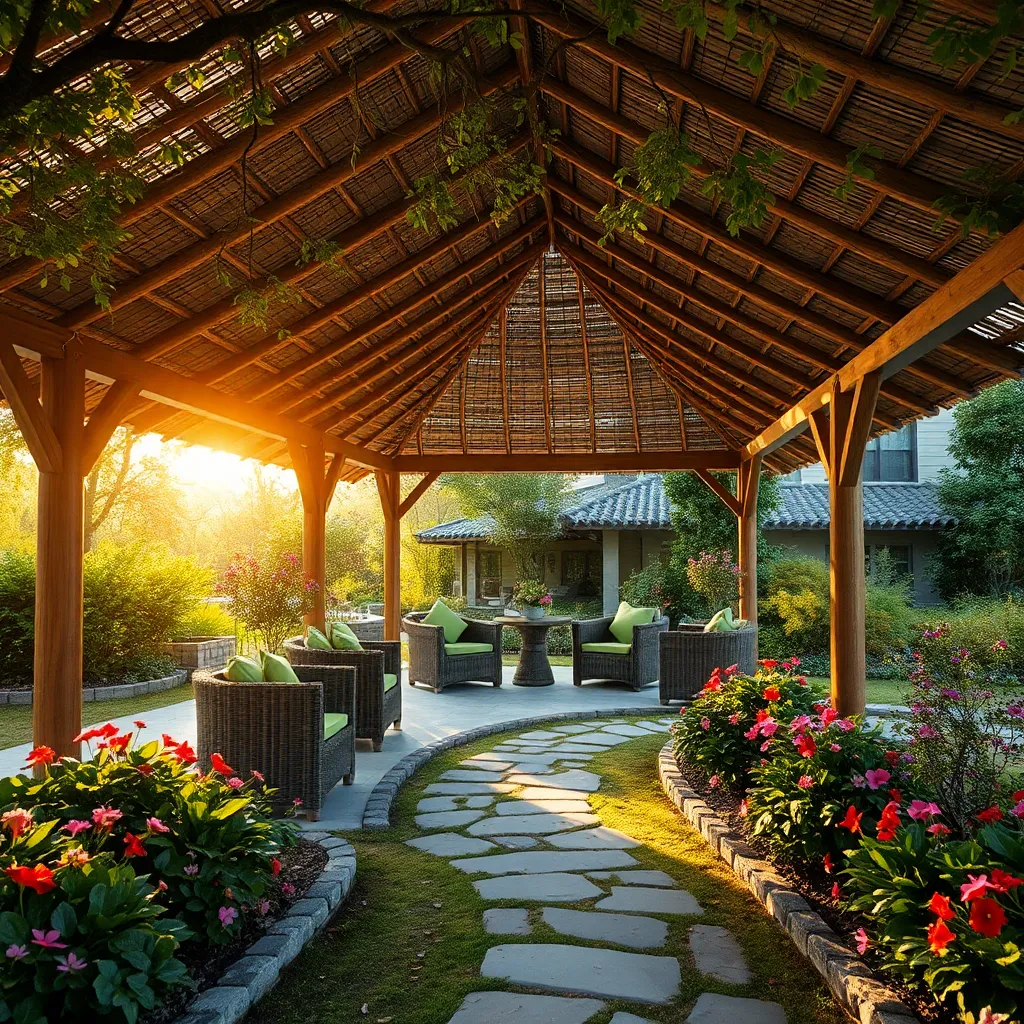
To integrate nature-inspired elements into your garden pavilion, consider using natural materials like wood, stone, and bamboo. For a simple yet elegant design, opt for a wooden frame using cedar or redwood, which are both durable and resistant to decay. Beginners can start with a basic post-and-beam structure, while more experienced DIYers might explore advanced designs like a live-edge wood roof or stone columns that blend seamlessly with the garden landscape.
Incorporating elements such as green roofs or climbing plants can further enhance the natural feel of your pavilion. A green roof, planted with low-maintenance succulents or native grasses, provides insulation and blends your structure into the surroundings. Alternatively, consider installing trellises or wire grids along the pavilion’s edges for climbing plants like wisteria or jasmine, which can provide shade and fragrant blooms. These features not only improve aesthetics but also promote biodiversity and sustainability in your garden.
Use Retractable Canopies for Versatility
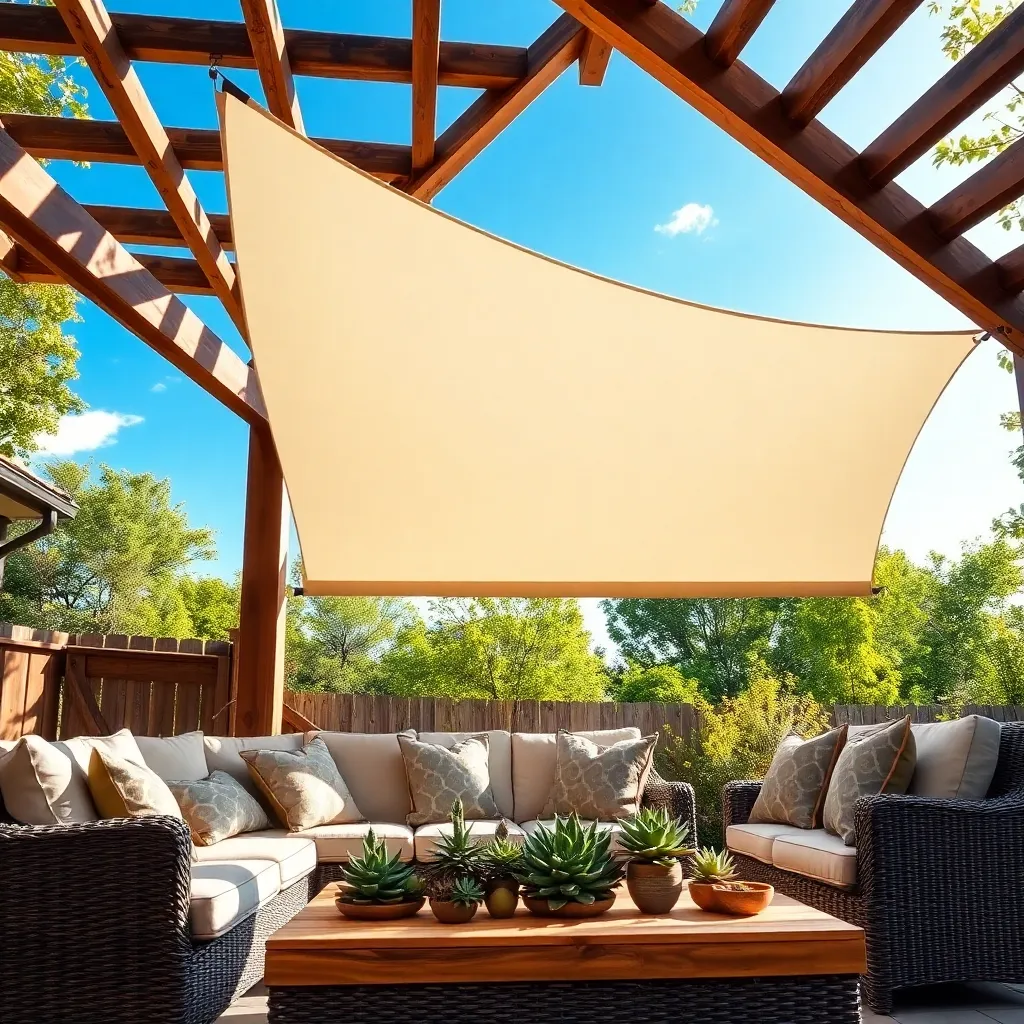
Retractable canopies offer a dynamic solution for those looking to maximize the versatility of their garden pavilion. These canopies allow you to enjoy sunshine when you want it and provide shade when needed, all at the pull of a cord or push of a button. For beginners, opt for **manual retractable canopies** made from durable, weather-resistant fabric like polyester or acrylic, which are easy to install and maintain. Meanwhile, experienced gardeners might consider **motorized options** with advanced features like remote control operation and automated sensors that react to weather conditions.
To ensure your retractable canopy complements your outdoor space, consider the **size and scale** of your garden pavilion. Measure accurately and choose a canopy that fits snugly, ensuring it doesn’t overwhelm the structure or appear too small. Materials such as **aluminum frames** provide a lightweight yet sturdy foundation, while powder-coated finishes offer additional protection against the elements. For added flair, select canopies in colors or patterns that harmonize with your garden’s aesthetic, creating a seamless and inviting outdoor retreat.
Create Multi-Seasonal Seating Areas
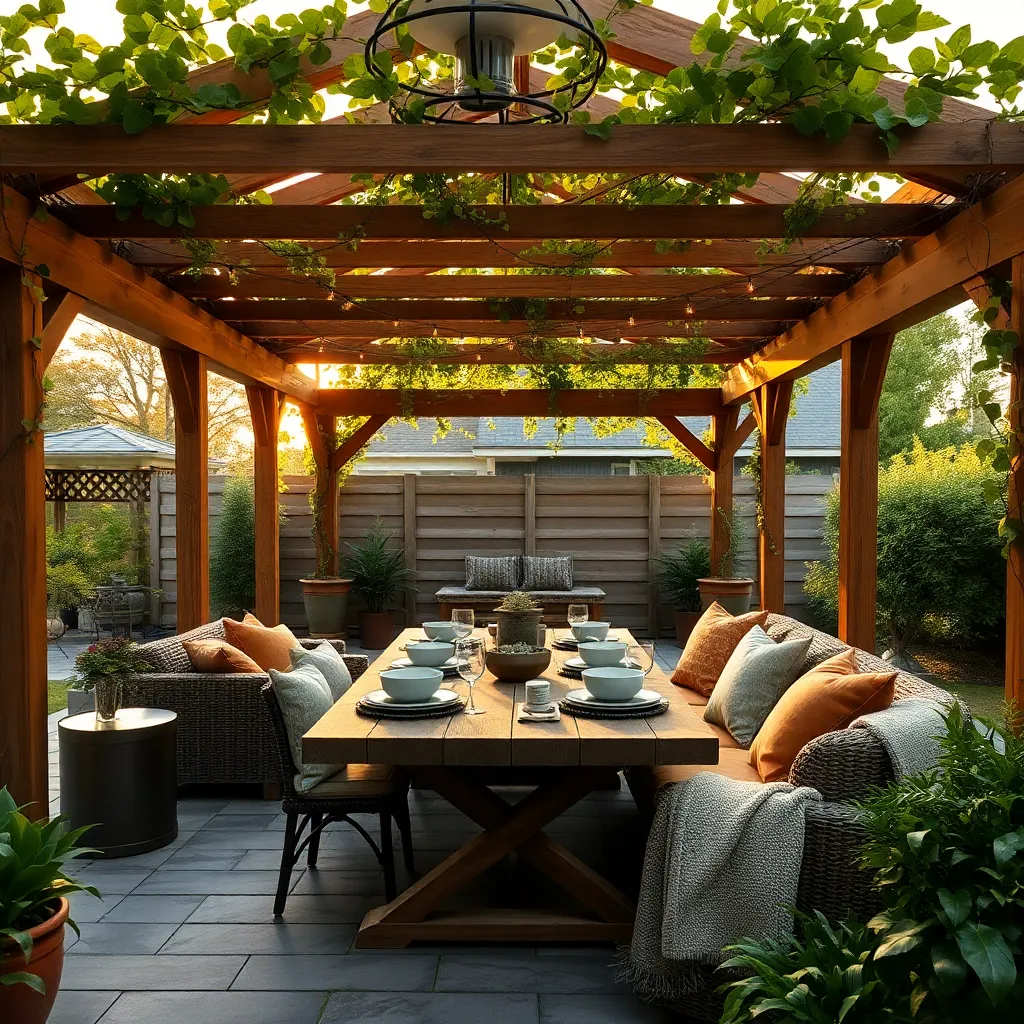
Transforming your garden into a multi-seasonal seating area can extend its usability throughout the year. Start by choosing durable furniture that can withstand various weather conditions. Materials like teak, powder-coated aluminum, or weather-resistant wicker are great options for outdoor seating. To ensure comfort, add cushions with removable, waterproof covers that can be easily washed or stored during inclement weather. Consider using modular seating arrangements that can be easily reconfigured, allowing your space to adapt to different seasons and occasions.
For protection against the elements, incorporate features such as pergolas with adjustable louvers or roll-down curtains. These allow you to control sunlight and wind exposure, creating a cozy atmosphere regardless of the season. Installing a fire pit or outdoor heater can further enhance warmth during cooler months, making the area inviting even in colder weather. Advanced gardeners might explore integrating solar-powered lighting to extend usability into the evening while minimizing energy costs. With these thoughtful design elements, your garden can become a welcoming retreat all year round.
Integrate Vertical Greenery for Privacy
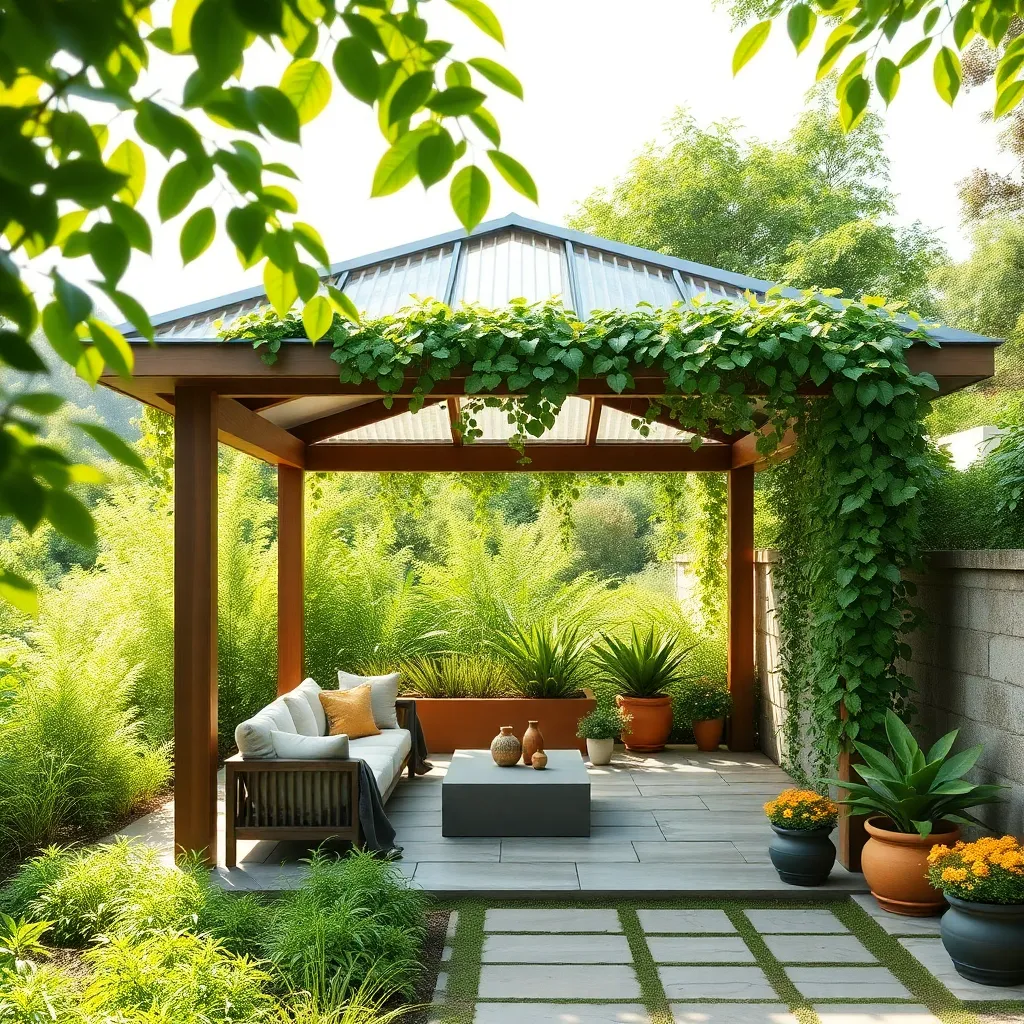
Enhancing privacy in your garden pavilion can be both functional and visually appealing by integrating vertical greenery. Consider using climbing plants like ivy, clematis, or jasmine that can easily wrap around trellises or pergola beams. Choose a sturdy trellis made of weather-resistant materials like cedar or metal to support the plants as they grow, offering a lush, green barrier that softens your space and adds privacy.
For a more advanced approach, construct a living wall using modular planters or pocket panels. This technique allows you to grow a variety of plants vertically, creating a vibrant, green tapestry. Ensure your structure can support the weight of the soil and plants, and consider installing a drip irrigation system to maintain optimal moisture levels. This method not only provides privacy but also enhances air quality and brings a striking natural element to your outdoor area.
Choose Sustainable Materials for Longevity
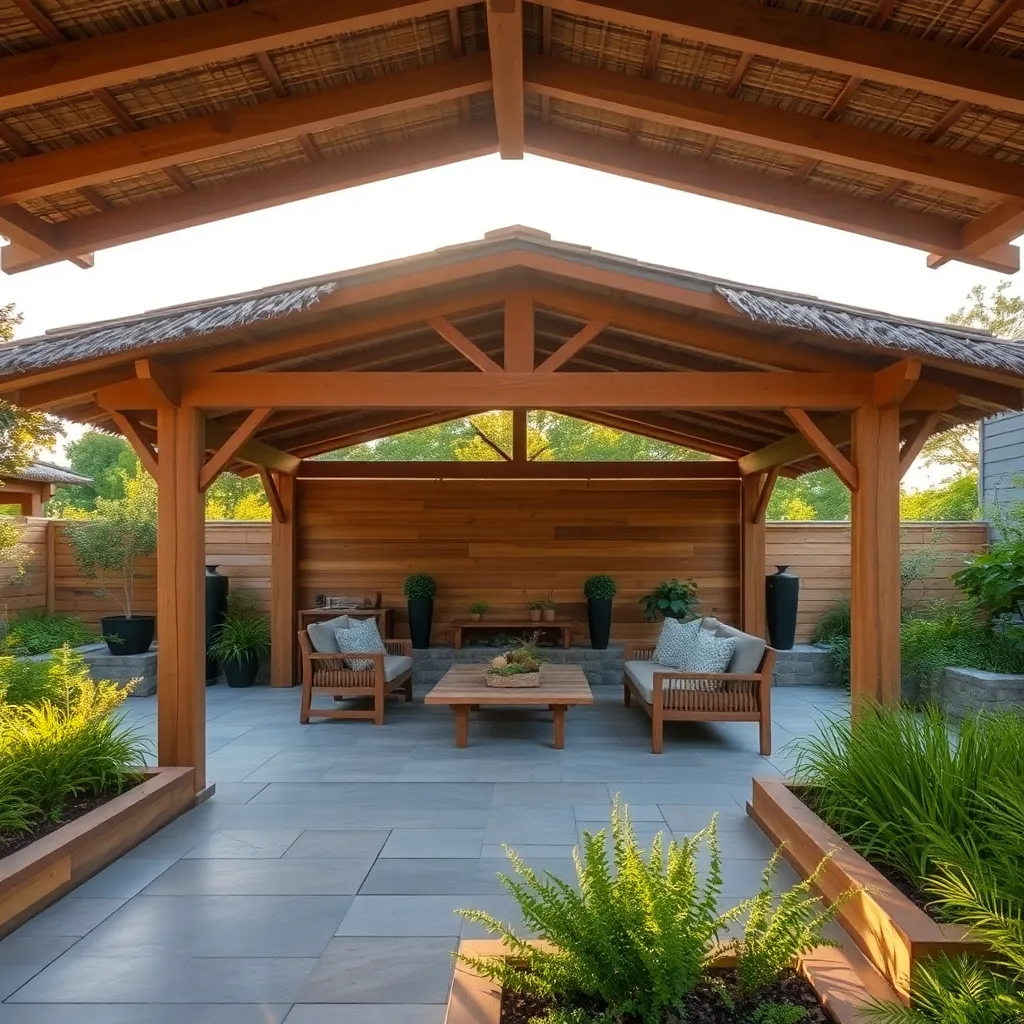
When choosing materials for your garden pavilion, prioritize those that are sustainable and durable to ensure the structure’s longevity. Opt for materials like bamboo, reclaimed wood, or recycled metal, which not only have a lower environmental impact but also offer robust performance against weather elements. For beginners, consider using treated timber that resists rot and pests, while seasoned DIY enthusiasts might explore newer materials like bio-composites for a modern touch.
Ensure your pavilion design incorporates elements that enhance both functionality and aesthetics. Integrating a sloped roof made from weather-resistant materials, such as galvanized steel or polycarbonate panels, helps in efficient rainwater drainage and increases life expectancy. Advanced builders can explore incorporating solar panels for energy efficiency or using natural fiber ropes for a rustic yet sustainable look. By focusing on these practical design elements, your garden pavilion will not only be an inviting retreat but also a long-lasting addition to your outdoor space.
Conclusion: Creating Beautiful Outdoor Spaces
In exploring the fascinating world of garden pavilions, we’ve uncovered five key relationship concepts that can transform your outdoor space into a haven of connection. First, we discussed the importance of creating a shared sanctuary, a space that reflects both partners’ tastes and invites open conversation. Next, we explored the power of personalization, encouraging couples to infuse their pavilion with elements that tell their unique love story. The third concept highlighted the role of nature in nurturing relationships, as natural surroundings can foster relaxation and deeper bonds. Fourth, we touched on the value of flexibility in design, ensuring the pavilion can adapt to different moods and occasions. Lastly, we emphasized the importance of shared experiences, using the pavilion as a stage for memorable moments.
To put these ideas into action, start by choosing one concept to implement this weekend—perhaps a small decoration or a new plant. As you embark on this journey of creating a relationship-enhancing space, remember to bookmark this article for ongoing inspiration. By nurturing both your garden and your connection, you set the stage for a thriving relationship that grows stronger with each passing season. Let your creativity flourish, and watch as your partnership blossoms into a vibrant, lasting bond.
